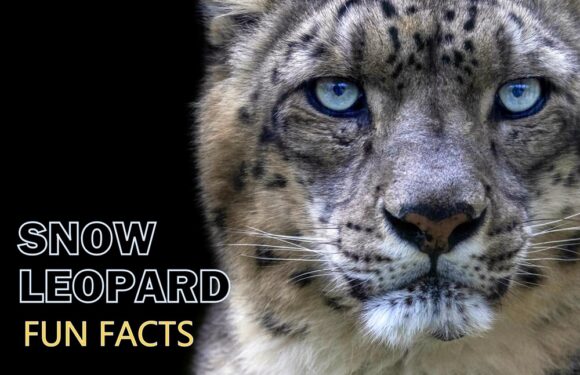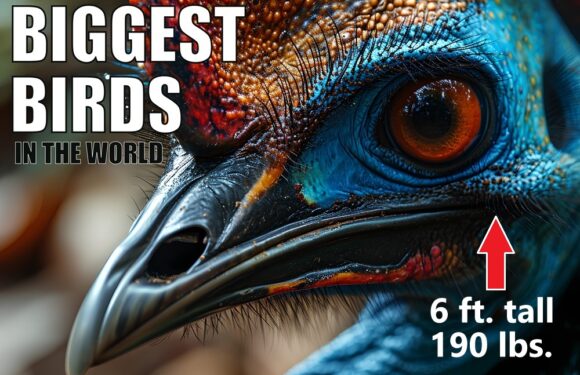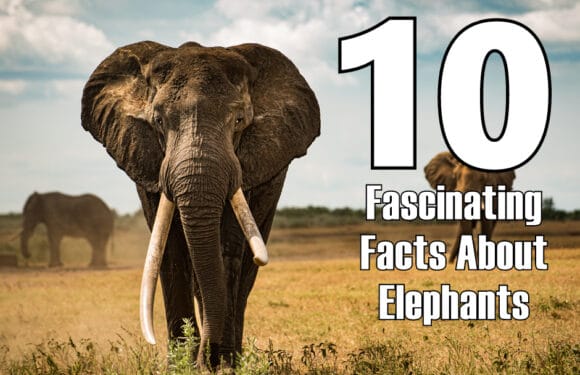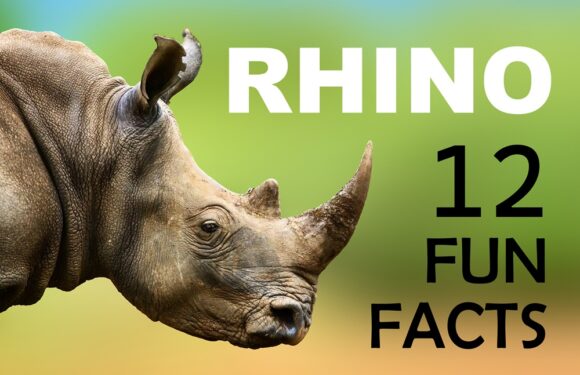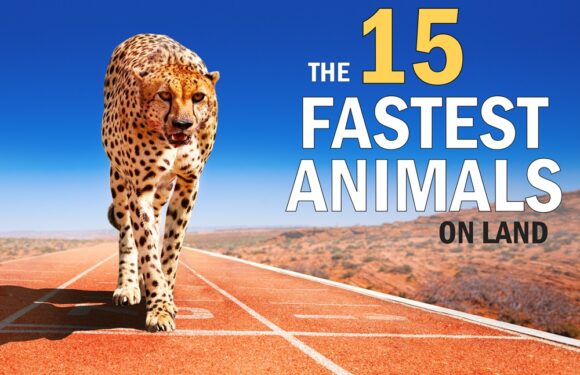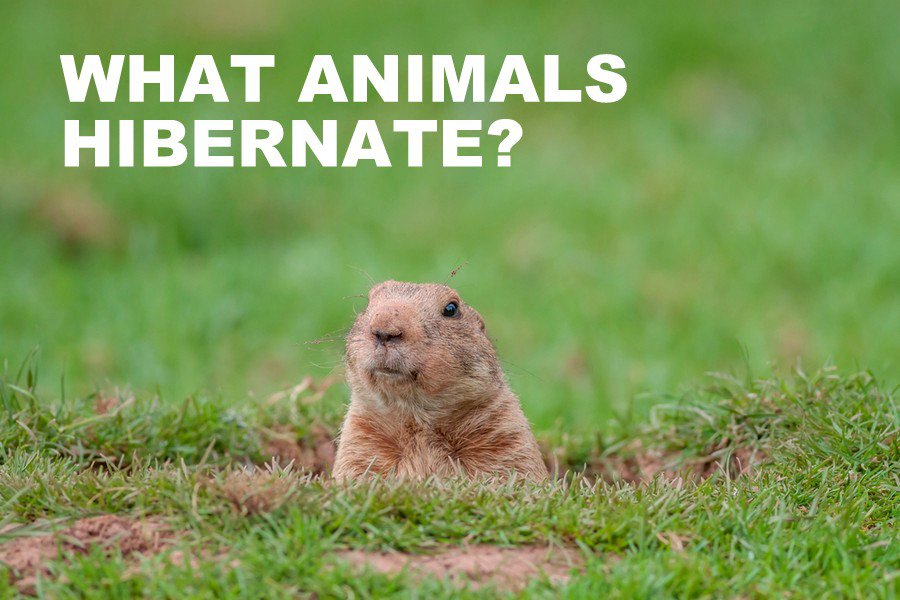
What is Hibernation?
Hibernation is a prolonged state of dormancy observed mainly in mammals. During hibernation, animals experience a significant reduction in their metabolic rate, body temperature, and physical activity. This state allows them to conserve energy over the winter months when food sources are limited. Hibernation is characterized by preparation phases where animals accumulate fat reserves to sustain them through the period when they are not actively feeding.
What are Torpor and Brumation?
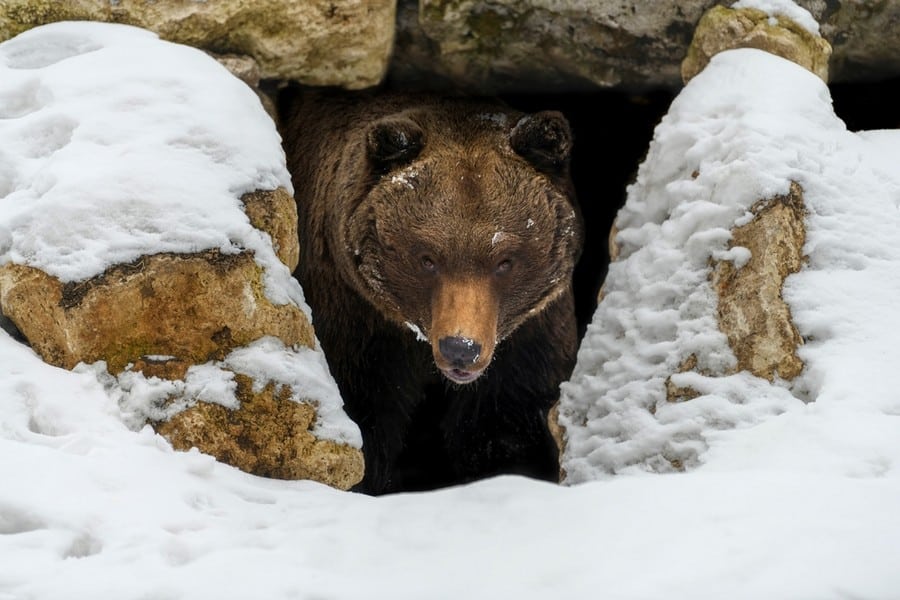
Torpor and brumation are similar physiological states to hibernation, but the key differences between lie in their duration, the extent of metabolic reduction, and the animals’ body temperature changes.
Torpor is a shorter, temporary state of reduced metabolic activity and lowered body temperature. Unlike hibernation, which can last for several months, torpor typically occurs for shorter periods, often just overnight or during particularly cold or scarce periods. Animals in torpor, such as bears, certain bird species and bats, can quickly return to normal body function. This adaptability is crucial for survival, allowing these animals to respond rapidly to changes in their environment.
Brumation is a term used to describe a similar state of dormancy in reptiles and amphibians. Like hibernation, brumation involves a slowdown in metabolism, but these ectothermic (cold-blooded) animals do not experience the same decrease in body temperature as endothermic (warm-blooded) animals. Instead, their body temperature changes with the ambient environment. Reptiles in brumation may wake occasionally to drink water but generally remain inactive until conditions improve.
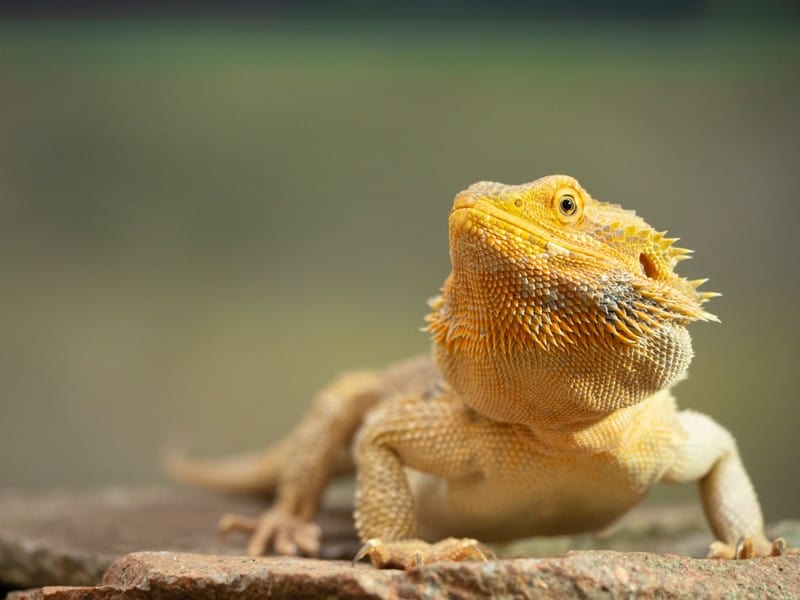
Why Do Animals Hibernate?
Hibernation, in essence, is a survival mechanism. It is a response to the challenge of enduring environmental extremes and food shortages. By entering this state, animals reduce their metabolic rate to a fraction of the normal levels, drastically cutting down their energy needs and thus, their reliance on regular food intake.
From an evolutionary standpoint, hibernation offers significant advantages, allowing species to inhabit environments they would otherwise find hostile. This adaptation reduces competition for resources during lean times, ensuring survival of both hiberanting species and non-hibernating species.
16 Animals That Hibernate
For the purposes of this article, we will include animals that enter the physiological states of hibernation, torpor, and brumation.
1. Bears
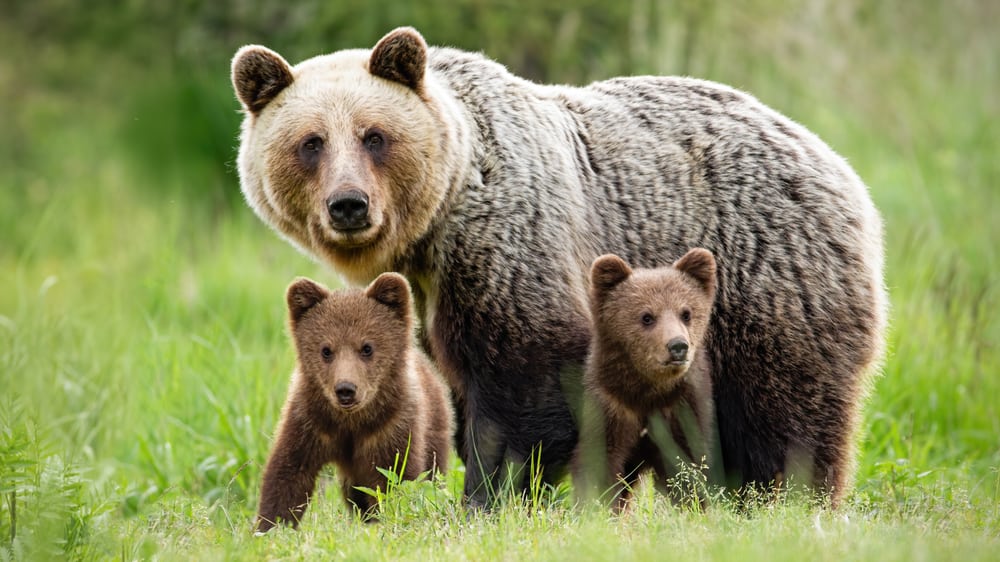
- Range: Distributed across North America, South America, Europe, and Asia.
- Habitat: Diverse, including forests, mountains, tundra, and some tropical regions.
- Diet: Omnivorous, with diets varying greatly by species and location, including berries, fish, insects, and mammals.
- Size: Varies significantly among species, from the smaller sun bears (around 4.5 feet or 1.4 meters in length) to the larger polar bears (up to 9.8 feet or 3 meters in length).
Bears are well known for their winter sleep, referred to as torpor. Bears enter a lighter state of dormancy, where their body temperature slightly decreases, and metabolism slows down, but they remain more alert and can awaken more easily. During this period, bears rely on fat reserves accumulated throughout the active months, enabling them to go without eating, drinking, or eliminating waste for several months. Particularly fascinating is the ability of female bears to give birth during this dormant period, nurturing newborn cubs in the den until spring.
2. Groundhog
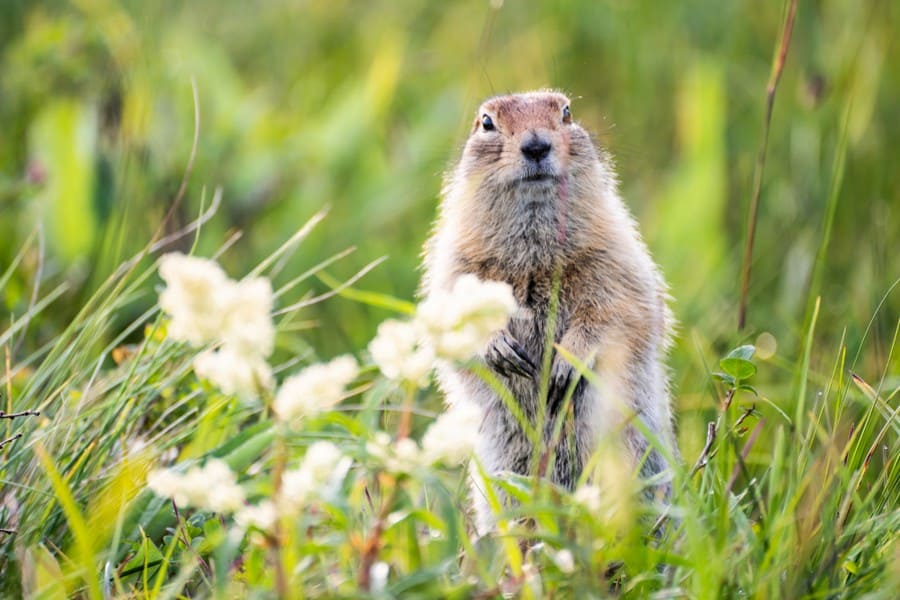
- Range: Eastern and central United States.
- Habitat: Open fields and woodlands.
- Diet: Mainly vegetarian, including leaves, grass, and fruits.
- Size: About 20 inches (51 cm) long and weighs 6 to 12 pounds (2.7 to 5.4 kg).
Groundhogs, famous for predicting spring’s arrival, hibernate in burrows for three to six months. These large rodents can weigh up to 13 pounds (5.9 kg) and consume a varied diet of greens, fruits, and tree bark. Their hibernation is key to their survival in the fluctuating temperatures of their eastern U.S. and Canada habitats.
3. Common Poorwill
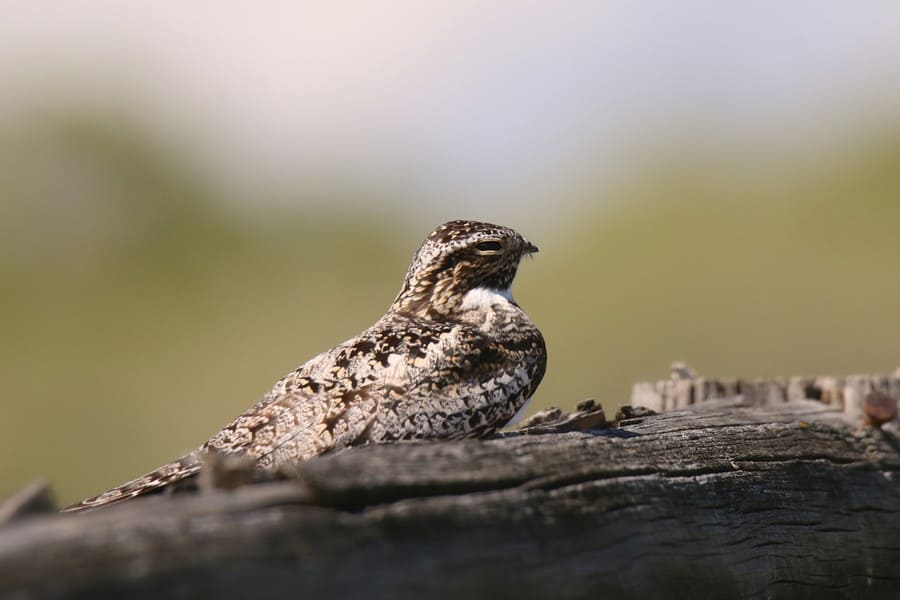
- Range: Western United States to Mexico.
- Habitat: Deserts and semi-arid regions.
- Diet: Insects.
- Size: Approximately 7.5 inches (19 cm) in length.
The Common Poorwill is the only bird known to hibernate. It spends up to five months under rocks or inside logs. This bird reduces its metabolic needs by 93% during hibernation. Weighing about 1.9 ounces (54 grams), it feeds on insects during its active months. Its ability to hibernate is a rare trait that fascinates ornithologists.
4. Fat-Tailed Dwarf Lemur
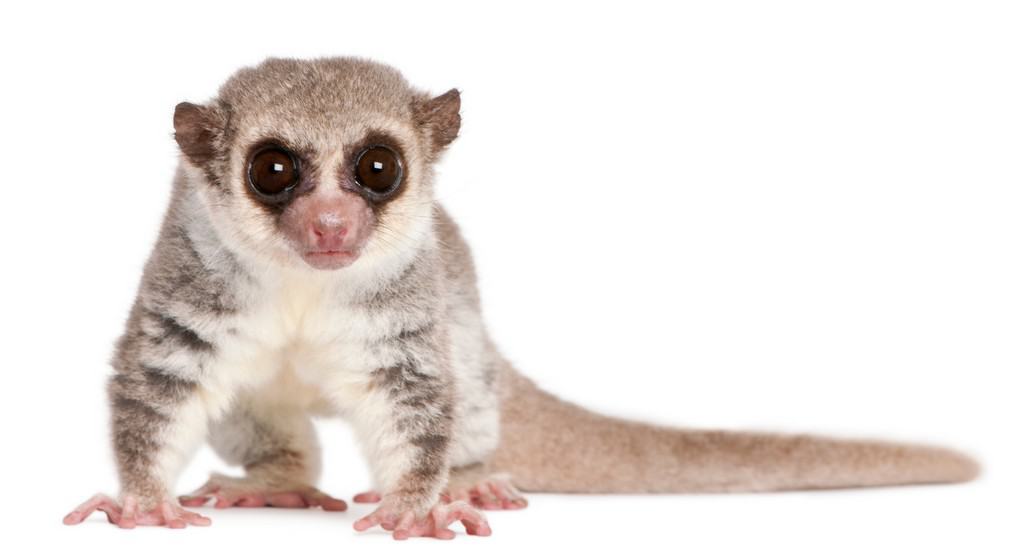
- Range: Endemic to Madagascar.
- Habitat: Tropical forests.
- Diet: Primarily fruit, insects, and nectar.
- Size: Approximately 9.8 inches (25 cm) in length, with tails of similar length.
The Fat-Tailed Dwarf Lemur is notable for being the only primate known to undergo true hibernation. During the dry season, which can last up to seven months, these lemurs hibernate in tree hollows or other secluded spots. The fat stored in their tails before hibernation provides the necessary energy during the months they spend in hibernation.
5. Hedgehog
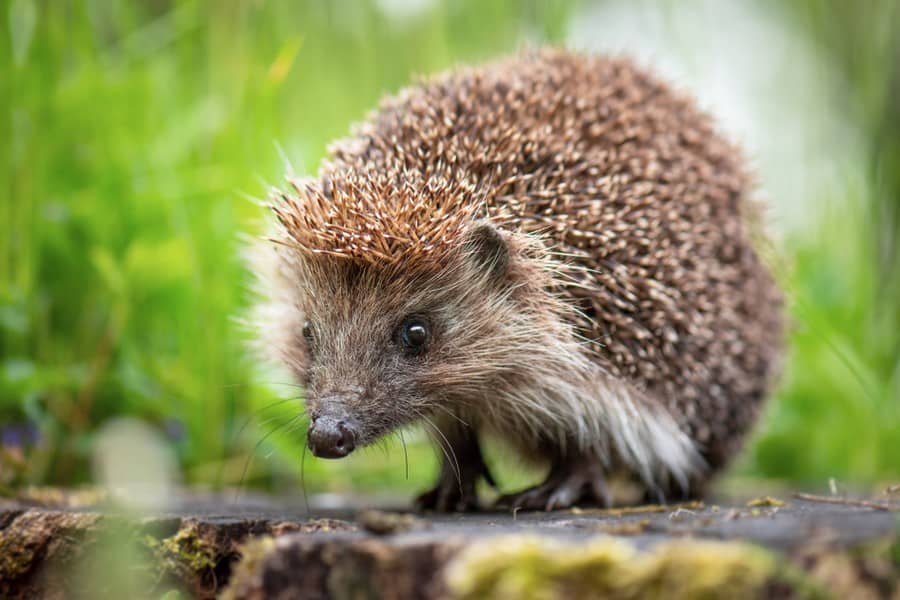
- Range: Europe, Asia, and Africa.
- Habitat: Forests, gardens, and farmlands.
- Diet: Insects, snails, frogs, and berries.
- Size: Generally 9 to 12 inches (23 to 30 cm) long.
European Hedgehogs prepare leafy nests for their hibernation, which can last from October to April. These small mammals, weighing around 2 pounds (0.9 kg), have a diet consisting of insects, snails, and worms. Their unique defense mechanism, rolling into a ball of spikes, protects them from the claws and jaws of predators.
6. Wood Frog
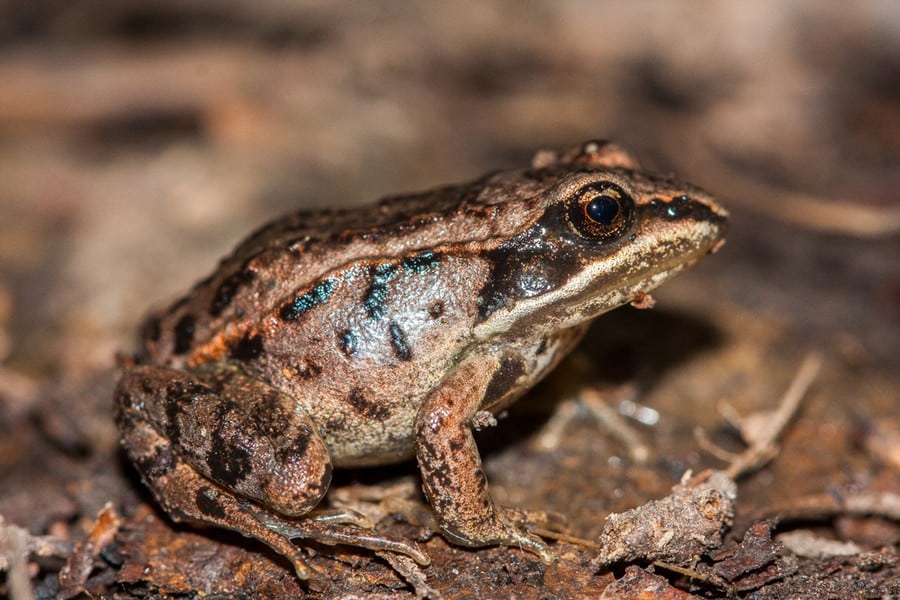
- Range: North America, particularly the northeastern United States and Canada.
- Habitat: Woodlands and forested areas.
- Diet: Insects, spiders, and worms.
- Size: Around 2 to 2.8 inches (5 to 7 cm) long.
Wood Frogs have a incredible hibernation strategy. They freeze solid and their heart completely stops during winter! Found across North America, from Alabama to the Arctic, they grow to about 2.5 inches (6.4 cm) long. In spring, they thaw and resume activity. Their ability to survive freezing conditions has been extensively studied for medical applications.
7. Snail
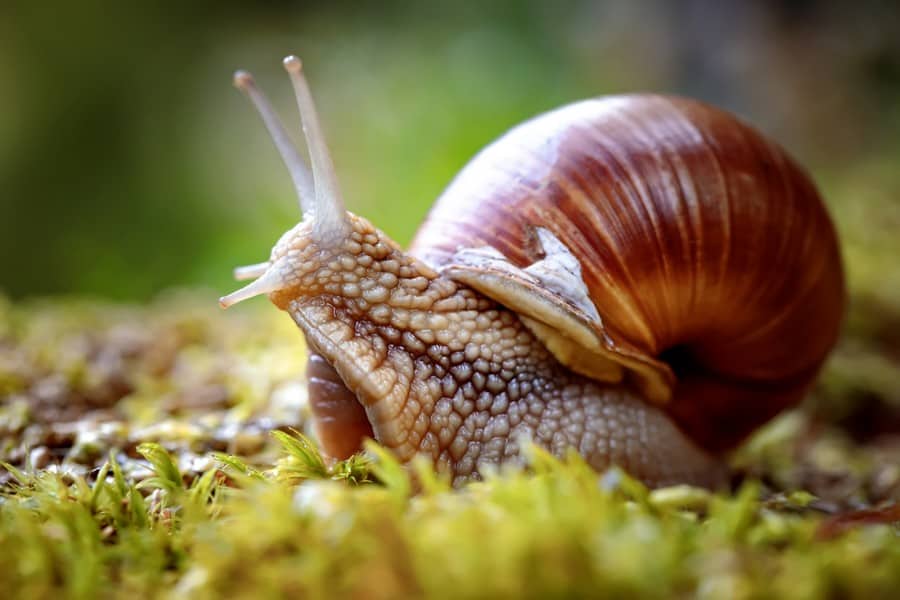
- Range: Worldwide.
- Habitat: Diverse, including gardens, forests, and water bodies.
- Diet: Plants, fruits, and algae.
- Size: Varies widely; common garden snails are about 1.3 inches (3.3 cm) in diameter.
Snails can hibernate or estivate for months to years, sealing their shells with mucus to conserve moisture. With a diverse habitat ranging from gardens to forests worldwide, they feed on plants and decaying matter. Some species of garden snails measure about 1 inch (2.5 cm) in diameter. Their hibernation allows them to survive in climates where other species would perish.
8. Skunk
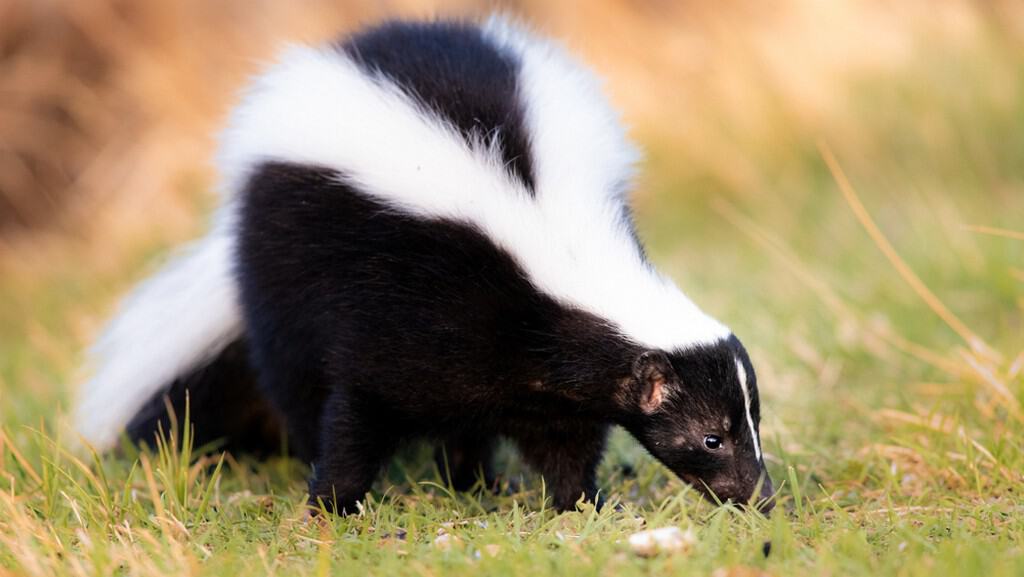
- Range: North and South America.
- Habitat: Woodlands, grasslands, and suburban areas.
- Diet: Omnivorous, including insects, small mammals, and plant matter.
- Size: About 20 to 30 inches (50 to 76 cm) long, including the tail.
Skunks are not true hibernators. They enter a state of torpor for winter months. Found throughout the United States and Canada, they consume insects, small mammals, and berries. Skunks are known for their distinctive defense mechanism, spraying a foul-smelling liquid at threats. They can weigh up to 14 pounds (6.3 kg) and live in a variety of habitats, from forests to urban areas.
9. Garter Snake
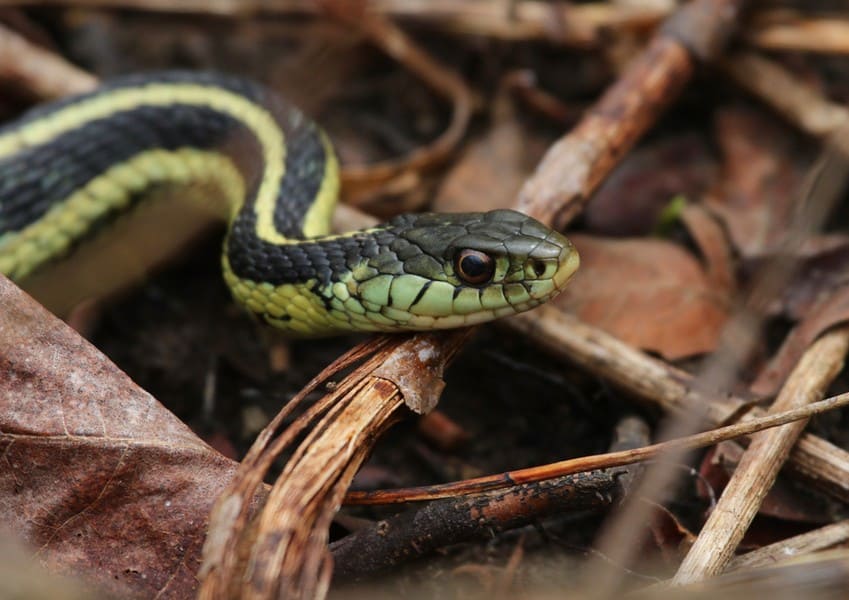
- Range: Widely distributed across North America.
- Habitat: Variety of environments from woodlands to meadows.
- Diet: Feeds on worms, amphibians, and slugs.
- Size: Typically reaches 23 to 30 inches (58 to 76 cm) in length.
Garter Snakes gather in large numbers for hibernation, creating a communal den that can house hundreds to thousands of snakes. This behavior provides warmth and protection, illustrating a social aspect of hibernation not commonly observed in reptiles. The sight of these snakes emerging en masse from their dens in spring is a amazing phenomenon.
10. Alpine Marmot
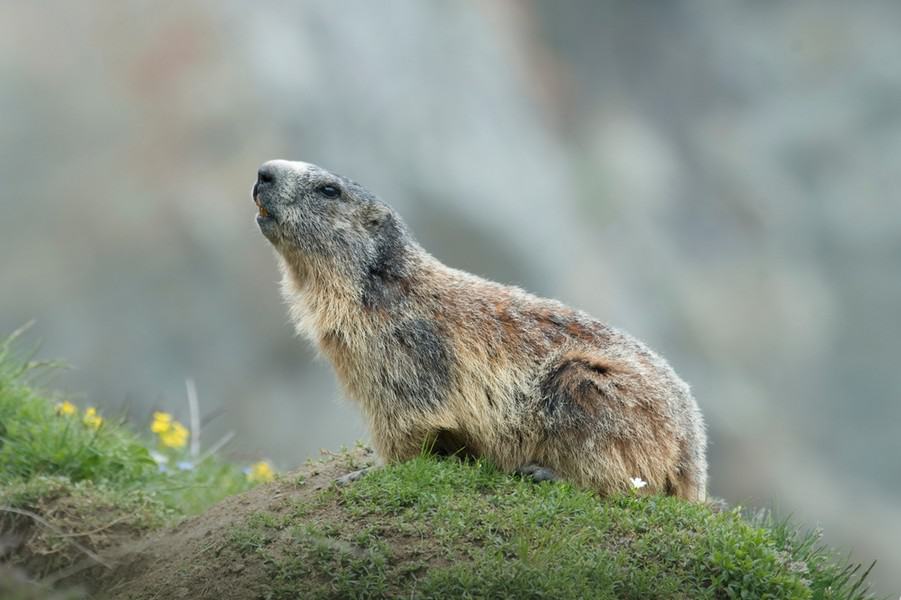
- Range: Central and southern Europe.
- Habitat: Alpine meadows at higher elevations.
- Diet: Primarily vegetarian, consuming a diet of grasses, berries, and insects.
- Size: Can grow up to 29 inches (73 cm) long.
Alpine Marmots exhibit one of the longest hibernation periods among mammals, spending up to eight months in a state of deep torpor. Its diet is herbivorous, consisting mainly of grasses, herbs, and occasionally insects, which it must gather in abundance during the warmer months to build up fat reserves. When winter approaches, they retreat into their burrows and fall into a deep sleep. They emerge in spring ready to feed and reproduce.
11. Bumblebee
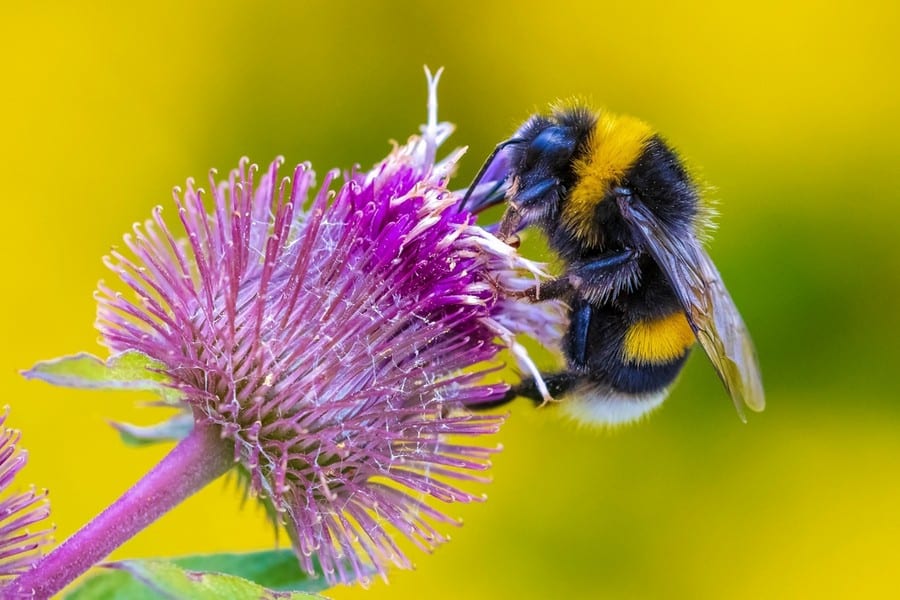
- Range: Distributed globally, found in temperate climates.
- Habitat: Gardens, countryside, and woodlands.
- Diet: Nectar and pollen.
- Size: Queen bumblebees can measure up to 1 inch (2.5 cm) long.
Bumblebees have a interesting lifecycle that involves the hibernation of the queen bee. After laying the foundation for a new colony, the queen bee hibernates underground, surviving on stored fat reserves. This period of dormancy can last between 6 to 8 months, depending on the species and environmental conditions.
12. Common Box Turtle
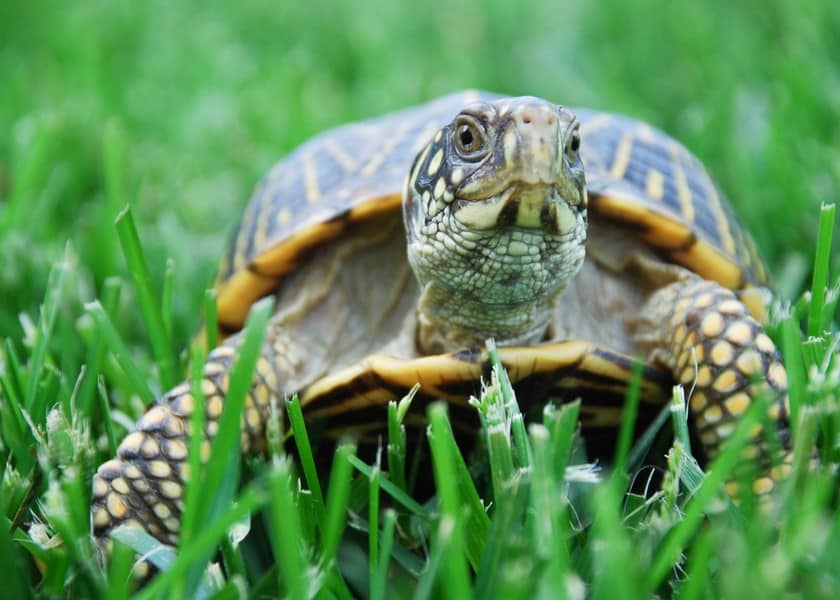
- Range: Found throughout the eastern United States.
- Habitat: Moist forest floors, meadows, and floodplains.
- Diet: Omnivorous, with a diet including fruits, mushrooms, insects, and worms.
- Size: Typically 4 to 7 inches (10 to 18 cm) in shell length.
As ectothermic (cold-blooded) animals, box turtles rely on external sources of heat to regulate their body temperature. However, during the colder months, when temperatures drop and food becomes scarce, they enter brumation. Unlike true hibernation, where animals are in a deep sleep, brumating turtles retain a level of alertness, enabling them to emerge on warmer days if necessary. An extraordinary aspect of their brumation is the ability to absorb oxygen through their skin from the surrounding moist soil, bypassing the need for lung respiration.
13. Moth
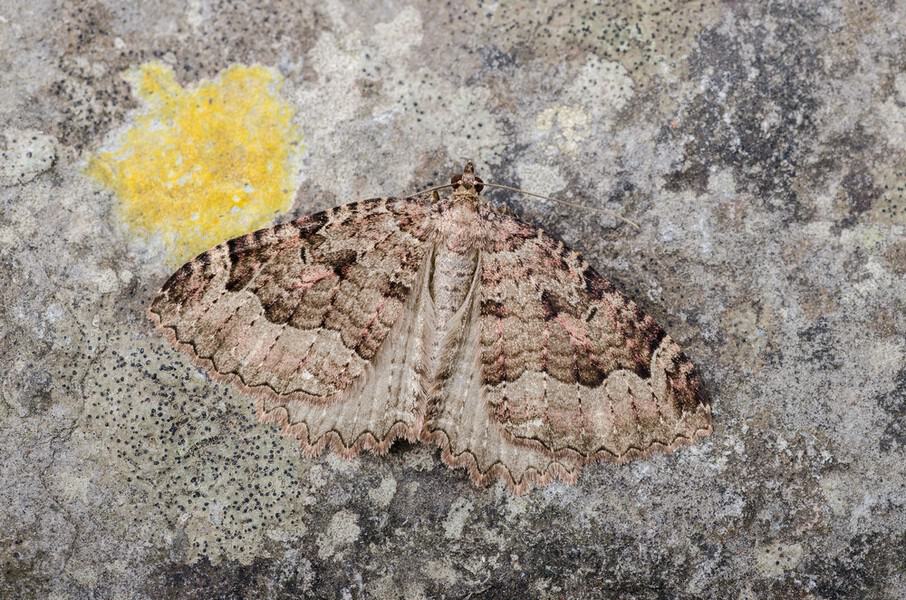
- Range: Worldwide distribution.
- Habitat: Varied habitats, including gardens, woodlands, and grasslands.
- Diet: Larvae feed on leaves; adults may not eat at all.
- Size: Ranges widely, from less than an inch to over 12 inches (2.5 cm to over 30 cm) in wingspan.
Moths, depending on the species, adopt different strategies for surviving the winter, with some entering a state of dormancy. This period of inactivity allows them to conserve energy until conditions become favorable again for feeding and reproduction.
14. Arctic Ground Squirrel
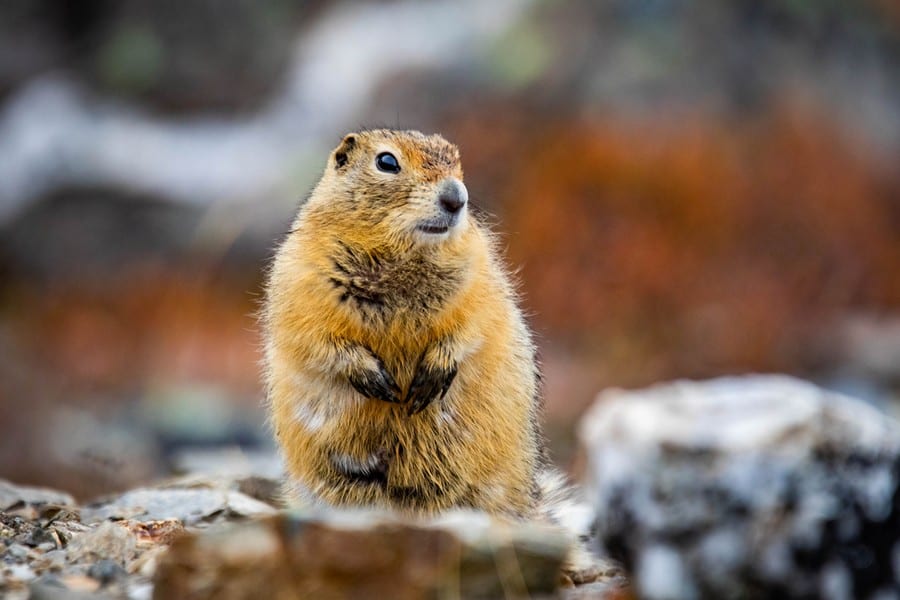
- Range: Predominantly found in the Arctic tundra of North America and Siberia.
- Habitat: Arctic tundra and boreal forests.
- Diet: Omnivorous, feeding on seeds, nuts, berries, grasses, and occasionally insects.
- Size: Around 15 inches (38 cm) in length, including the tail.
Arctic ground squirrels have the deepest and longest periods of torpor among all mammals. During hibernation, their body temperature can drop to as low as 27°F (-3°C), below the freezing point of water, a phenomenon known as supercooling. They can remain in this suspended state for up to 8 months, relying on stored body fat to survive the harsh Arctic winter. This species has adapted to extreme cold by burrowing underground, where they enter a communal hibernation that provides added warmth and protection.
15. Hummingbird
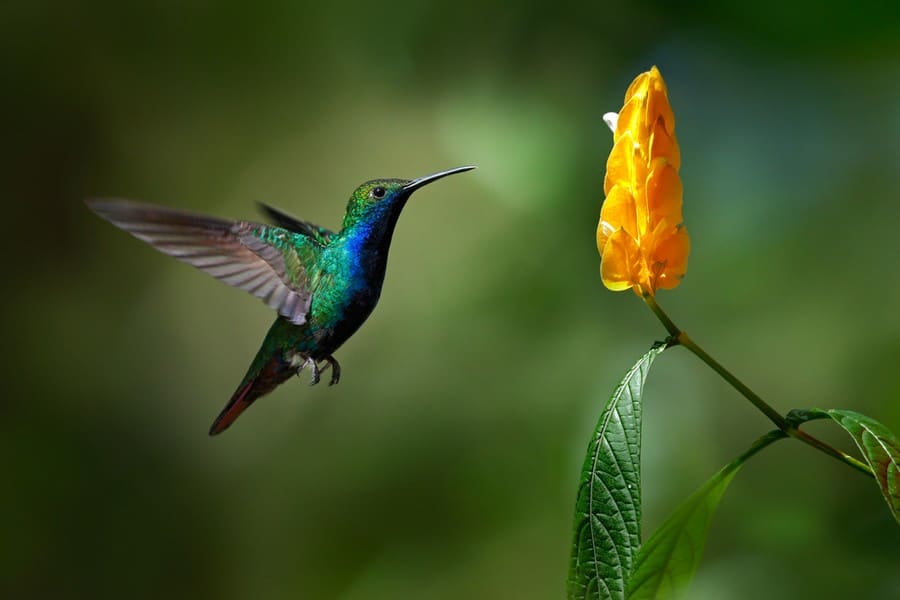
- Range: Found in the Americas.
- Habitat: Dense forests, open grasslands, desert areas, and urban gardens and backyards.
- Diet: Feed on nectar from flowers, and small insects.
- Size: Some species measuring just 3 inches (7.6 cm) in length and weighing as little as 0.1 ounces (2.8 grams).
While not hibernators in the traditional sense, hummingbirds can enter a state known as torpor. During torpor, a hummingbird’s heart rate can drop from over 1,000 beats per minute to fewer than 50 beats per minute, and its body temperature can decrease significantly, making it appear as if the bird is in a deep sleep.
16. Bat
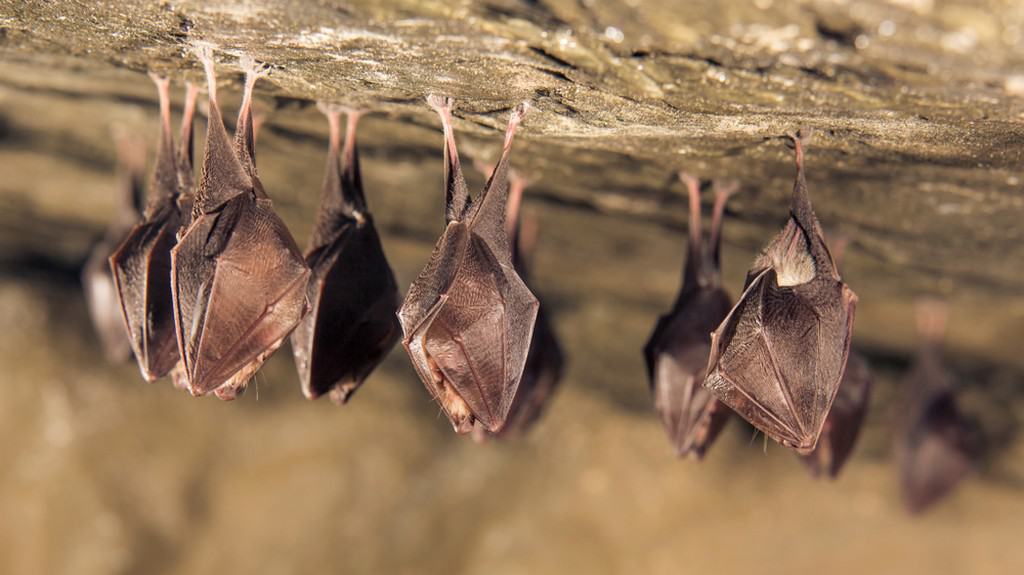
- Range: Found worldwide, except for extreme desert and polar regions.
- Habitat: Varied, including forests, caves, and urban areas.
- Diet: Mostly insects, although some species consume fruit, nectar, or even small vertebrates and blood.
- Size: Ranges widely, from the tiny bumblebee bat (about 1.1 to 1.3 inches or 2.8 to 3.3 cm in length) to the large flying foxes (with wingspans up to 5.6 feet or 1.7 meters).
As temperatures drop and food becomes scarce, many bat species in temperate regions enter a state of hibernation. Hibernation in bats involves retreating to locations that provide stable, cold temperatures and protection from predators. These sites, often caves or abandoned mines, are selected for their ability to maintain conditions that prevent bats from freezing, yet are cold enough to keep their metabolism at a minimum. The process is not continuous sleep; bats periodically arouse from hibernation, possibly to hydrate or respond to disturbances.





















































